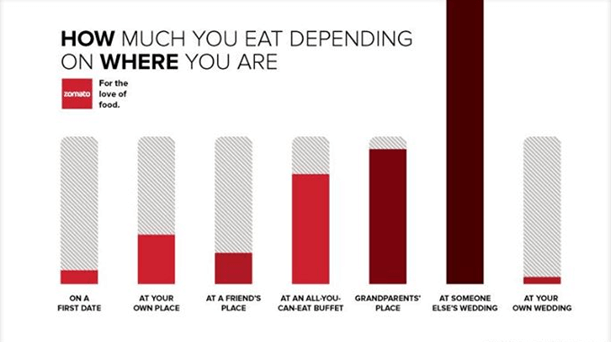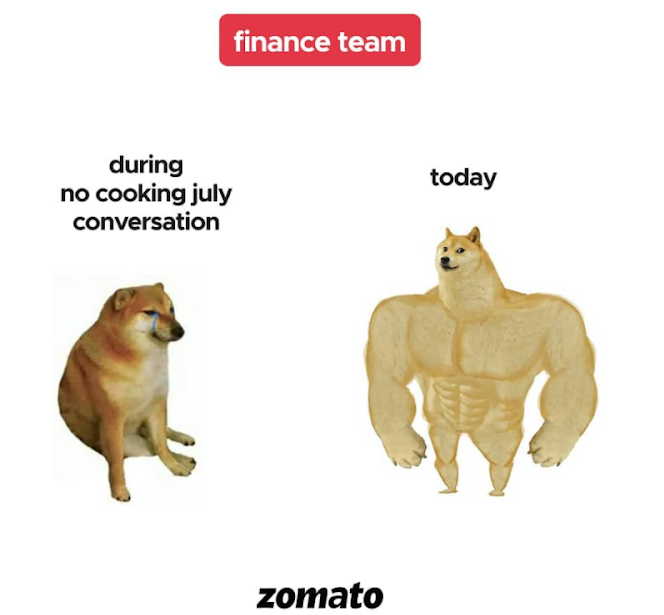What are some of the first names that come to mind when someone says, “Let’s grab some food online?” Was there any possibility you didn’t think of Zomato right away?
Zomato is now associated with the idea of online food delivery. It has become an important element of the lives of all food lovers worldwide.
It all started with Foodiebay, a restaurant search and discovery tool that debuted in 2008. Initially, the app included the names of various eateries, as well as prices, menus, and ratings or reviews, among other things.
It gradually but slowly evolved into an online meal delivery business. People may order meals from their favourite restaurants without having to deal with any hassle by just clicking a few buttons.
Recent surveys and analysis on Zomato delivery app
But before starting this amazing topic we want to reveal to you that according to an article on Livemint Zomato’s IPO, which was fully subscribed on the first day of bidding on Wednesday, was oversubscribed on 16th July 2021, according to merchant bankers. Henceforth, qualified institutional buyers (QIB) were 55 times subscribed, while retail buyers were 8 times.
Observers say Zomato’s grey market premium (GMP) was 10-12 on 16th July 2021, up from 8.75-9 the day before.
According to an article, Zomato now operates in more than 24 countries. It has also expanded worldwide, having operations in Sri Lanka, Qatar, Turkey, Brazil, and Indonesia, to name a few. Zomato also claimed to be profitable in all 24 countries in which it currently operates. They started their 0% commission approach at a partnering restaurant in February 2017.
Let us see how Zomato delivery does it.
The primary aim of the Zomato delivery app
Zomato set itself for those between the ages of 18 and 35 who are comfortable using mobile devices such as smartphones. Therefore, people in this age group are digitally savvy and can use mobile applications.
The target audience of Zomato has two categories.
• Customers that want to dine at a restaurant
Customers who “dine out” use the Zomato app to study the ratings and reviews of various restaurants and cafés. These are the kind of customers that use Zomato to study restaurant listings before going out to dine to ensure that they have a good dining experience in terms of both food and ambience. This group also gets incentives, such as the Zomato Gold Program, which offers extra benefits to members.
FUN FACT!
This is something you would not want to miss out on.
It has something to do with your eating habits. Likewise, zomato employs info-graphics in a manner that is relatable to its target demographic. 96 percent of the children would be able to connect to this picture without difficulty.



• Customers who purchase meals through the internet
Customers who choose to “order meals online” want to have their meal delivered to their home or workplace. These customers are unwilling to leave their houses. This category consists mostly of professionals who order meals for their job, students who live in a dorm or apartment, and those who just do not want to cook.
Zomato’s marketing strategy is legendary
Zomato has a multi-pronged marketing strategy. Henceforth, it gets traffic from a variety of outlets and sources. Zomato.com gets a significant quantity of traffic from a number of sources.
- Direct traffic is 31.36 percent of all traffic.
- 1.02 percent of all traffic is referred traffic.
- Searches account for 66.41 percent of all traffic.
- 0.73 percent of all visitors are attributed to social media.
- Advertisements through mail and display accounted for 0.47 percent of overall traffic.
Zomato’s business strategy is based on creativity and flexibility. The capacity of Zomato to keep up with the constantly changing food delivery environment in a country packed with foodies is critical to its success. Deepinder Goyal, the company’s founder, told ET in an interview that the numbers continue to astound him. Further, if an effort does not go as anticipated, the core team is ready to evaluate it, make the necessary changes, and pivot their approach if necessary to bring it back on track.
The infographic below, which Zomato released last year, offers a look at how people utilize Zomato’s services in different Indian towns.



Some unknown marketing strategy revealed by Curiouspoint!
1. SEO (Search Engine Optimization) Strategy
Firstly, zomato offers a well-developed strategy to search engine optimization. According to what we’ve discussed so far, Zomato gets about 66 percent of its traffic through internet searches. Their SEO efforts have led to 99.44 percent organic traffic from their search ratio, while sponsored searches account for just 0.56 percent of overall traffic. This explains why they use a strong search engine optimization strategy.

2. Keywords to Target
Secondly, zomato targets over 900,000 keywords to rank at the top of search results. As a consequence, it commands a prominent place in search results pages. Restaurant names, dish titles, and phrases related to the user’s search query, such as “cafes near me” or “order online food,” are among the keywords.
3. From the website’s pages are ranked.
Restaurants may create and maintain their pages on Zomato’s free website. On Zomato, about 6500 restaurants have been registered. That is one of the reasons why Zomato’s website has over 54 million pages. We are all aware that the more pages a website has, the higher it will rank on search engines, and this is how it rises to the top of search results.
4. Using a URL as a link
Keywords in URLs are a popular SEO strategy that we’ve all heard about. It aids the search engine in better comprehending your sites and presenting them in the search results pages.
Thus, zomato is well aware of this approach and generates URLs for its items using their top keywords. It contains phrases like “coffee near me,” “bars near me,” and “food near me.”
Zomato’s domain authority increases as a consequence of backlinks from 12,274,172 distinct domains. It also has high-authority backlinks from sites like.gov and.edu. Zomato’s SEO game has been bolstered by the purchase of high-quality links.
5. Social Media Marketing Strategy
You can’t afford to neglect social media marketing if you have an app that caters to customers aged 18 to 35. Zomato recognizes that the bulk of its target consumers are avid social media users. As a result, it focuses on creating social media ads and engaging posts to interact with the target audience.
Social media accounts for 0.73 percent of all traffic to Zomato.
Zomato’s followers on different social media sites are as follows:
- Facebook now has 1.9 million users.
- Instagram currently has 498K followers.
- Twitter now has 1.4 million users.
Henceforth, zomato understands what kind of posts would pique the attention of their fans on various social media channels, which is why they use a meme marketing strategy. According to Zomato’s Instagram profile, the firm has a “Meme page…occasionally publishes brand messages owing to demand from the business team.”



6. Zomato’s Paid Advertising
Zomato makes use of Google Ads to target certain customers. When someone searches for anything on Google, organic search results appear alongside paid ads. These are ads from Google. Zomato uses Google advertising to target both branded and non-branded keywords. Furthermore, it targets terms connected with various meals, online orders, restaurant names, and other similar subjects.
When a person searches for online meal orders on Google, the search engine displays paid ads from the business zomato.
Do you know?
Zomato recently released the data about the most popular dishes by city.

7. The Email Marketing Strategy of Zomato
Zomato knows how to make the most use of the Email Marketing tool. Zomato’s email marketing strategy is one of the most clever and engaging on the market. Likewise, zomato’s brand loyalty is through the appealing subject lines and a call to action.
However, when it comes to its most recent email marketing campaign, Zomato is inspired by the famous Amazon Prime Video series Mirzapur season-2. Zomato included subject lines related to the Mirzapur characters.
Among the examples are “Munna Bhaiya invited you to a weekend” and “enjoy a weekend to guddu to be true.
8. Zomato’s marketing strategy is intended to fuel the daily wager.
Furthermore, by establishing a fund for the thousands of individuals who work in their delivery network, Zomato is assisting them in replacing any income lost as a consequence of the situation. It is also actively working with the government to guarantee that its services remain operational during the crisis.
Takeaways…
As a consequence, Zomato has emerged as one of the most popular online meal delivery businesses. It has dominated the sector due to a strong marketing strategy. You may have noticed that Zomato is all over the marketing strategy. This is something you may have observed. Zomato delivery is present in a variety of locations, including social media, billboards, search engines, and YouTube. This shows the effectiveness of their marketing strategy.
You may discover how to control the market and reach an important position by using an efficient marketing strategy, among other things, from zomato. Do let us know in the comment section if we missed out on anything.
Thank you for staying by the end. Check out our blog to explore more.
